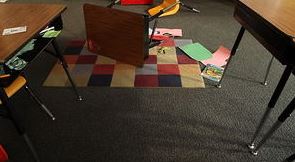Never tell people how to do things. Tell them what to do
and they will surprise you with their ingenuity. —General George S. Patton
Scripted curricula, manualized education plans with uniform outcomes and detailed discipline/ classroom management guidelines may be making schools more uniform, but what do they cost in terms of teacher health and children’s learning?
The latest federal schools and staffing survey reveals that teachers are continuing to feel they have less professional autonomy in every area from teaching strategies and amount of homework given to discipline. The loss is felt most by veteran teachers, those with ten years of experience or more. Sadly, a recent Gallup poll showed nearly 70 percent of teachers surveyed reported feeling disengaged from their work. When teachers no longer feel connected to their work, they find it difficult to bring energy to the classroom and are less available for caring positive relationships with their students. The emotional connection between teacher and student is one of the core elements of the learning process, one that cannot be prescribed in a ‘one-size-fits-all’ model.
To be fair, there may be such a thing as too much autonomy. Not everyone works well with little direction. When not managed well, an autonomous workplace can be seen as disorganized and chaotic and newer, less experienced teachers, often placed in high-needs areas, may struggle without greater administrative oversite. Too much control and teachers burn out, too little and they can feel isolated and unsupported.
Students are expected to learn critical thinking and decision making skills, in essence generating their own critical independent thinking skills. This can only be accomplished in an environment that embraces autonomy and creativity and allows for learning through trial and error. When the school culture prohibits teachers from collaboration and innovation, when decisions are made top-down and void of input from teachers, students are robbed of the chance to see leadership in action. Students need teachers who are enthusiastic about their craft and models for how to embody a love of knowledge and to create their own fulfilling work.
Teachers interact with the students of their schools on a daily basis. They know what works and what doesn’t. Schools wishing to empower greater teacher autonomy can start by finding ways to include teachers in decisions concerning hiring and firing; learning materials; discipline; scheduling, budgets and salaries. Teachers can help encourage a more teacher-led approach by welcoming opportunities to collaborate, mentor and learn from one another. In the end, it will be the students who reap the rewards as their teachers remain excited and committed to their passion for the profession.










